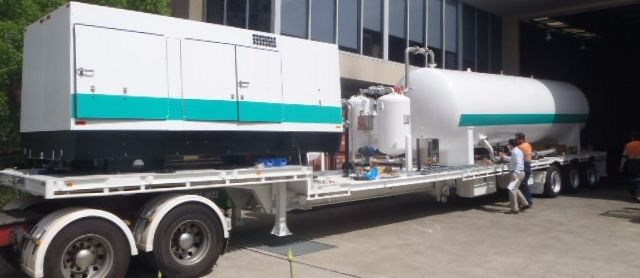Safe Environments were recently engaged to undertake a noise survey of a mobile operating gas plant for a leading manufacturer in greater western Sydney. The plant and equipment that was manufactured and tested as part of this assessment were a diesel engine air compressor and a dryer with a holding tank. This plant and equipment may afford a risk of Noise Induced Hearing Loss if people are working within the vicinity of the plant and equipment where noise pressure levels are greater than 85 dB(A).
The emphasis of the noise survey is to assess the noise levels and the risk of persons working for extended periods of time within these areas, assess whether signage and control measures such as personal hearing devices are required.
How was the Noise Survey Conducted
The noise survey was undertaken in accordance with AS 1269.1 Occupational Noise Management Part 1 Measurement and assessment of noise immission and exposure. Measurements were taken with a Brüel & Kjær 2250 (serial number 3001009) Type 1 Integrating Sound Level Meter (SLM) with 1/3- Octave Band Analysis which had been calibrated within the two year specified period for the SLM and the Acoustic calibrator being calibrated within the one year specified period.
The noise levels measured to the generator were found to be greater than 85 dB(A) for the diesel engine air compressor and dryer. The diesel air compressor emitted noise levels between 90.4 and 94.0 dB(A) where the dryer emitted noise levels between 95.2 and 96.3 dB(A).
Outcomes of the Noise Survey
From these measurements we were able to assist in provided the correct hearing protection to be worn. Due to the close proximity between the diesel engine air compressor and the dryer it was recommended that Class 3 PHP be worn when working with or near the plant to ensure that any worker is adequately protected.
As PHP is required it is recommended that a PHP management plan be developed in line with AS/NZS 1269.3 combined with appropriate information, instruction and training given to all users. Signage is also important to advise workers that they will be subjected to significant noise exposure when they enter the area and that personal hearing protection is required.
If you have plant and equipment that requires to be assessed, even before purchasing, please contact one of the Safe Environments Hygienists located in Sydney and Melbourne to assist in identifying, evaluating and controlling the potential of industrial deafness.
Author: Carl Strautins

Email: Carl@SafeEnvironments.com.au
Carl Strautins is a managing director of Safe Environments Pty Ltd a multi-specialist consultancy operating in the building, construction and property management industries. He provides the necessary guidance and risk minimisation strategies required by architects, construction companies and facility managers to ensure they mitigated their risk to property risk. He is engaged on a regular basis to provide expert opinion for disputes and legal proceedings. Click here to know more about him.


